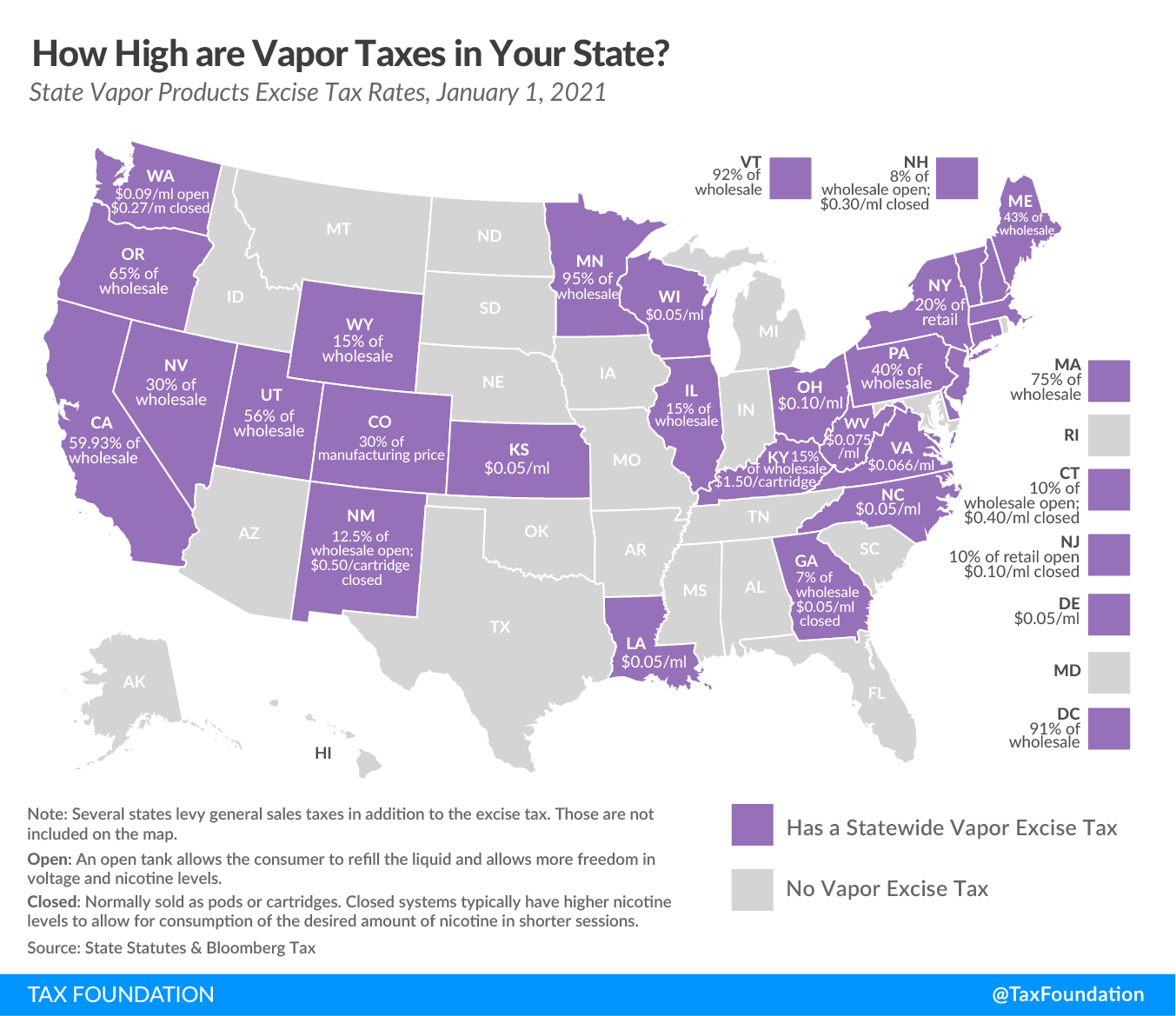Several states are considering introducing or increasing taxes on vapor products to make up declining taxA tax is a mandatory payment or charge collected by local, state, and national governments from individuals or businesses to cover the costs of general government services, goods, and activities. revenue from traditional tobacco products or to fill budget holes in the wake of the coronavirus pandemic. However, lawmakers should approach the issue carefully because flawed excise taxAn excise tax is a tax imposed on a specific good or activity. Excise taxes are commonly levied on cigarettes, alcoholic beverages, soda, gasoline, insurance premiums, amusement activities, and betting, and typically make up a relatively small and volatile portion of state and local and, to a lesser extent, federal tax collections. design on vapor products could drive consumers back to more harmful combustible products like cigarettes.
Since vaping entered the market in the mid-2000s, it has grown into a well-established product category and a viable alternative to smokers. So far, 28 states and the District of Columbia have imposed an excise tax on vaping products. Additionally, the federal government is likely to impose a tax on vaping products in the near future.
While vapor taxes may represent an untapped revenue source for states that have yet to impose an excise tax, substantial revenue is unlikely in the short term.
This week’s map shows where state vapor taxes stand as of January 1.
Vapor taxing methods vary. Authorities tax baseThe tax base is the total amount of income, property, assets, consumption, transactions, or other economic activity subject to taxation by a tax authority. A narrow tax base is non-neutral and inefficient. A broad tax base reduces tax administration costs and allows more revenue to be raised at lower rates. d on price (ad valorem), volume (specific), or with a bifurcated system that has different rates for open and closed tank systems. Of those that tax wholesale values, Minnesota tops the list with a 95 percent rate, but Vermont follows closely at 92 percent. Delaware, Kansas, Louisiana, North Carolina, and Wisconsin all share the lowest per milliliter rate ($0.05).
Vapor products can deliver nicotine, the addictive component of cigarettes, without the combustion and inhalation of tar that is a part of smoking cigarettes. While more research relating to the potential harm-reduction qualities of vapor products is needed, for now, the consensus is that vapor products are less harmful than traditional combustible tobacco products. Public Health England, an agency of the English Ministry for Health, concludes that vapor products are 95 percent less harmful than cigarettes.
Given this difference in harm levels, it is important to understand the concept of harm reduction and its relevance for vapor products taxes. Vapor products—even if unhealthy in their own right—are highly attractive as an alternative to smoking. After all, one main reason smokers have a hard time quitting is the addictive nature of nicotine. Harm reduction is the concept that it is more practical to reduce the harm associated with the use of certain goods rather than attempting to eliminate it completely through bans or punitive levels of taxation.
Protecting access to harm-reducing vapor products is intertwined with tax policy because nicotine-containing products are economic substitutes. A well designed tax on vapor products should be at low rates to encourage switching from combustibles. Conversely, high excise taxes on harm-reducing vapor products risk harming public health by pushing vapers back to smoking. A recent publication found that 32,400 smokers in Minnesota were deterred from quitting cigarettes after the state implemented a 95 percent excise tax on vapor products.
If the policy goal of taxing cigarettes is to encourage cessation, vapor taxation must be considered a part of that policy design. For more discussion on the ideal design for vapor and other excise taxes, check out our recent report.
Stay informed on the tax policies impacting you.
Subscribe to get insights from our trusted experts delivered straight to your inbox.
Subscribe